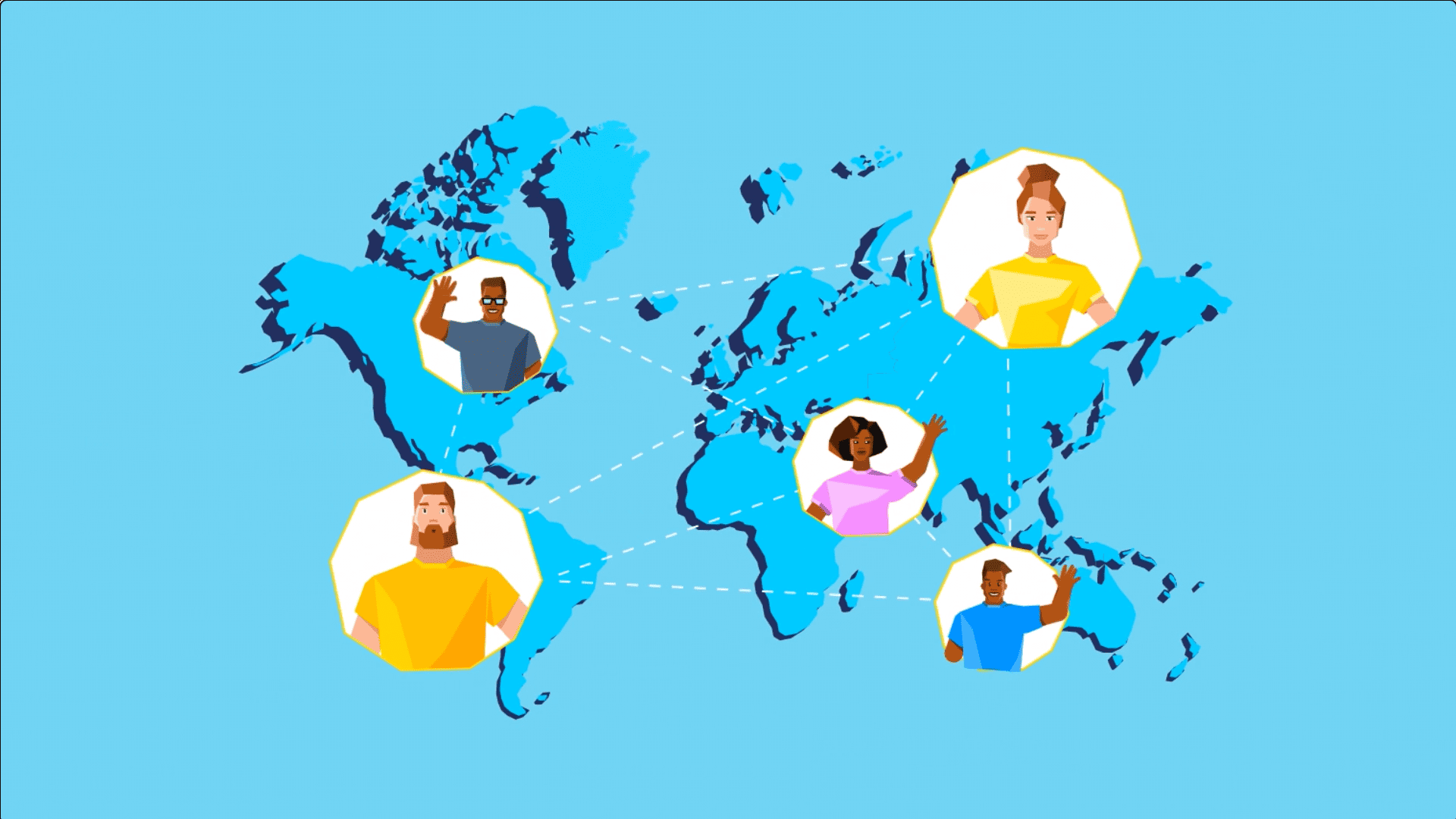Viral marketing is a powerful strategy that leverages the power of social media and word-of-mouth to create a buzz around a brand, product, or message. Viral marketing can help businesses reach new audiences, increase brand awareness, generate leads, and boost sales.
But viral marketing is not easy to achieve. It requires creativity, planning, and execution. And it also needs to adapt to the changing preferences and behaviors of consumers and the evolving technologies and platforms that enable viral marketing.
In this article, we will explore some of the emerging trends and innovations in viral marketing that you need to know for 2023. These trends will help you craft viral marketing campaigns that resonate with your target audience and stand out from the crowd.
1. How Personalization Enhances Emerging Trends and Innovations in Viral Marketing
Personalization is not a new concept in marketing, but it is becoming more important and sophisticated in viral marketing. Consumers are bombarded with thousands of messages every day, and they expect brands to deliver relevant, tailored, and engaging content that matches their interests, needs, and preferences.
Personalization can help you create viral marketing campaigns that connect with your audience on an emotional level and make them feel valued and understood. Personalization can also help you segment your audience and target them with different messages and offers based on their behavior, location, demographics, psychographics, and other criteria.
To personalize your viral marketing campaigns, you need to collect and analyze data from various sources, such as social media platforms, customer relationship management (CRM) systems, web analytics tools, and artificial intelligence (AI) solutions. You also need to use platforms that allow you to create and distribute personalized content across multiple channels, such as email, SMS, push notifications, web pages, landing pages, social media posts, videos, podcasts, etc.
Some examples of brands that use personalization in their viral marketing campaigns are:
- Spotify: The music streaming service creates personalized playlists for its users based on their listening history and preferences. It also generates annual reports called Spotify Wrapped that showcase the users’ favorite songs, artists, genres, podcasts, and other stats. These reports are highly shareable and generate a lot of social media buzz every year.
- Netflix: The video streaming service uses AI to recommend content to its users based on their viewing history and preferences. It also creates personalized trailers for its shows and movies that highlight the scenes and characters that are most likely to appeal to each user. These trailers are designed to entice users to watch more content and share it with their friends.
- Starbucks: The coffee chain uses its mobile app to offer personalized deals and rewards to its customers based on their order history and preferences. It also gamifies its app by allowing users to collect stars and redeem them for free drinks and food. These features encourage loyalty and word-of-mouth among customers.
2. How Social Media Supports Emerging Trends and Innovations in Viral Marketing
Social media is the backbone of viral marketing. It is where most viral content is created, shared, consumed, and amplified. Social media platforms provide businesses with access to billions of potential customers who can spread their messages organically or through paid advertising.
But social media is not static. It is constantly evolving with new features, formats, algorithms, and networks. To succeed in viral marketing on social media, you need to keep up with these changes and adapt your strategies accordingly.
Some of the social media trends that will impact viral marketing in 2023 are:
- Influencer Marketing: Influencer marketing is the practice of partnering with influential people who have a large and engaged following on social media to promote your brand, product, or message. Influencer marketing can help you reach new audiences, boost your credibility, increase your engagement, and drive conversions. According to a report by Influencer Marketing Hub, influencer marketing is expected to grow to a $13.8 billion industry in 2021.
- New Video Trends: Video is the most popular and engaging form of content on social media. According to Cisco, video will account for 82% of all internet traffic by 2023. But video is not limited to traditional formats like YouTube or Facebook videos. There are new video trends that are gaining popularity on social media, such as short-form videos (e.g., TikTok, Instagram Reels, YouTube Shorts), live videos (e.g., Facebook Live, Instagram Live, LinkedIn Live), interactive videos (e.g., Instagram Stories, Snapchat), 360-degree videos (e.g., Facebook 360), augmented reality (AR) videos (e.g., Snapchat Lenses, Instagram Filters), virtual reality (VR) videos (e.g., Oculus), etc.
- Social Responsibility: Social responsibility is the idea that businesses should act ethically and contribute positively to society. Social responsibility can help businesses build trust and loyalty among their customers and stakeholders. It can also help them create viral marketing campaigns that resonate with their audience’s values and emotions. According to a report by Sprout Social, 70% of consumers want brands to take a stand on social issues on social media.
3. How Artificial Intelligence Boosts Emerging Trends and Innovations in Viral Marketing
Artificial intelligence is the technology that enables machines to perform tasks that normally require human intelligence, such as learning, reasoning, understanding, and communicating.
Artificial intelligence can help you create viral marketing campaigns that are more effective, efficient, and innovative. AI can help you analyze data, generate insights, optimize decisions, automate tasks, personalize content, and create new experiences.
Some of the ways that AI can enhance your viral marketing campaigns are:
- Data Analysis: AI can help you collect and process large amounts of data from various sources, such as social media platforms, web analytics tools, customer feedback, etc. AI can help you identify patterns, trends, anomalies, and opportunities in the data that can inform your viral marketing strategy.
- Insight Generation: AI can help you turn data into actionable insights that can guide your viral marketing campaigns. AI can help you understand your audience’s behavior, preferences, needs, emotions, and motivations. AI can also help you discover new segments, niches, markets, and opportunities for your brand.
- Decision Optimization: AI can help you optimize your viral marketing decisions based on data and insights. AI can help you select the best channels, platforms, formats, messages, offers, and timing for your viral marketing campaigns. AI can also help you test and experiment with different variations and scenarios to find the optimal solution.
- Task Automation: AI can help you automate repetitive and tedious tasks that are involved in viral marketing campaigns. AI can help you create and distribute content, monitor and manage social media accounts, respond to comments and queries, track and measure performance, etc.
- Content Personalization: AI can help you personalize your content for each individual user based on their data and behavior. AI can help you tailor your content to match the user’s interests, needs, preferences, location, device, etc. AI can also help you create dynamic and adaptive content that changes according to the user’s context and feedback.
- Experience Creation: AI can help you create new and innovative experiences for your users that can enhance their engagement and satisfaction. AI can help you use technologies such as AR, VR, voice, chatbots, etc. to create immersive, interactive, and conversational experiences that can delight your users and make them share your brand with others.
Some examples of brands that use AI in their viral marketing campaigns are:
- Coca-Cola: The beverage giant uses AI to create personalized video ads for its customers based on their names and preferences. The ads feature celebrities such as Selena Gomez and LeBron James who address the customers by their names and invite them to enjoy a Coke with them. The ads are generated by an AI platform called Synthesia that uses deepfake technology to manipulate the celebrities’ faces and voices.
- Burger King: The fast-food chain uses AI to generate catchy slogans for its products based on social media trends and keywords. The slogans are created by an AI tool called Slogan Seller that uses natural language processing (NLP) to produce witty and humorous phrases that are relevant to the product and the audience. The slogans are then used in social media posts and ads that attract attention and engagement.
- L’Oréal: The beauty brand uses AI to create personalized beauty recommendations for its customers based on their selfies. The recommendations are powered by an AI platform called ModiFace that uses computer vision and deep learning to analyze the customers’ facial features, skin tone, hair color, etc. The platform also allows the customers to virtually try on different products and shades using AR technology.
4. How The Metaverse Expands Emerging Trends and Innovations in Viral Marketing
The metaverse is a term that refers to a virtual world where people can interact with each other and with digital content using immersive technologies such as VR, AR, 3D graphics, etc. The metaverse is envisioned as a seamless extension of the physical world where people can socialize, work, play, learn, shop, create, etc.
The metaverse is not a single platform or network but a collection of interconnected virtual spaces that are accessible through various devices and applications. Some examples of existing platforms that are part of the metaverse are Roblox, Fortnite, Minecraft, Facebook Horizon, Decentraland, etc.
The metaverse is a new frontier for viral marketing as it offers new opportunities for brands to reach and engage their audiences in novel and creative ways. Brands can use the metaverse to create immersive experiences that showcase their products and services in realistic or fantastical settings. Brands can also use the metaverse to collaborate with influencers and creators who have a strong presence and influence in the metaverse. Brands can also use the metaverse to sell digital goods and services that can be used or consumed in the virtual world.
Some of the examples of brands that use the metaverse for viral marketing are:
- Nike: The sportswear giant has filed several patents for creating and selling digital sneakers and apparel that can be worn by avatars in the metaverse. Nike also partnered with Roblox to create a virtual world called Nike Land, where users can explore, play, and interact with Nike-themed content and products.
- Gucci: The luxury brand has created several digital collections and experiences that can be accessed in the metaverse. Gucci collaborated with Roblox to create a virtual garden where users can customize their avatars with Gucci items and accessories. Gucci also partnered with Snapchat to create an AR lens that allows users to try on digital versions of its shoes and share them with their friends.
- Balenciaga: The fashion brand has launched a video game called Afterworld: The Age of Tomorrow, where users can explore a futuristic world and discover Balenciaga’s Fall 2021 collection. The game features stunning graphics, immersive soundtracks, and interactive elements that showcase the brand’s vision and creativity.
5. How User-Generated Content Empowers Emerging Trends and Innovations in Viral Marketing
User-generated content (UGC) is any form of content that is created by users or customers rather than by brands or professionals. UGC can include text, images, videos, audio, reviews, testimonials, etc.
UGC is a valuable asset for viral marketing as it can help brands increase their reach, engagement, trust, and conversions. UGC can help brands leverage the power of social proof, word-of-mouth, and peer recommendations. UGC can also help brands generate authentic, diverse, and relevant content that resonates with their audience.
To encourage UGC for your viral marketing campaigns, you need to:
- Create a clear and compelling call-to-action (CTA) that invites your audience to share their content with your brand or a specific hashtag.
- Provide incentives or rewards for your audience to participate in your UGC campaign, such as discounts, coupons, freebies, contests, etc.
- Showcase and amplify the best UGC on your website, social media platforms, email newsletters, etc.
- Engage with your audience by liking, commenting, sharing, and thanking them for their UGC.
Some examples of brands that use UGC for their viral marketing campaigns are:
- Airbnb: The online travel platform encourages its hosts and guests to share their stories and experiences on its website and social media platforms using the hashtag #Airbnb. Airbnb also features some of the best UGC on its blog, magazine, and podcast. Airbnb uses UGC to showcase the diversity, quality, and uniqueness of its offerings and to inspire travelers to book their next trip.
- GoPro: The action camera brand invites its users to share their photos and videos captured with GoPro devices on its website and social media platforms using the hashtag #GoPro. GoPro also runs a GoPro Awards program that rewards users for their best UGC with cash prizes and exposure. GoPro uses UGC to demonstrate the capabilities, features, and benefits of its products and to attract adventurous customers.
- Glossier: The beauty brand encourages its customers to share their selfies and reviews of Glossier products on its website and social media platforms using the hashtag #Glossier. Glossier also reposts some of the best UGC on its Instagram account and website. Glossier uses UGC to build a loyal community of fans and advocates who promote its products and values.
6. How Influencer Marketing Amplifies Emerging Trends and Innovations in Viral Marketing
Influencer marketing is the practice of partnering with influential people who have a large and engaged following on social media to promote your brand, product, or message. Influencer marketing can help you reach new audiences, boost your credibility, increase your engagement, and drive conversions.
According to a report by Influencer Marketing Hub, influencer marketing is expected to grow to a $13.8 billion industry in 2021. Influencer marketing is also becoming more diverse and inclusive, with more micro-influencers (those with less than 100,000 followers) and nano-influencers (those with less than 10,000 followers) gaining popularity and trust among consumers.
To succeed in influencer marketing in 2023, you need to:
- Identify the right influencers for your brand and goals
- Establish clear and realistic expectations and objectives
- Build authentic and long-term relationships with your influencers
- Provide creative freedom and value to your influencers
- Track and measure your influencer marketing performance and ROI
Some examples of brands that use influencer marketing for their viral marketing campaigns are:
- Daniel Wellington: The watch brand is known for its successful influencer marketing strategy that involves sending free watches to influencers in exchange for posts and reviews. The brand also encourages its influencers to use a unique discount code that they can share with their followers. Daniel Wellington has generated millions of impressions, engagements, and sales through its influencer marketing campaigns.
- Gymshark: The fitness apparel brand has built a loyal community of fans and advocates through its influencer marketing campaigns. Gymshark partners with fitness influencers who share their workouts, tips, and lifestyle using Gymshark products. The brand also hosts events and challenges that involve its influencers and customers. Gymshark has grown from a small online store to a global brand with over 12 million followers on Instagram.
- HelloFresh: The meal kit delivery service uses influencer marketing to showcase its products and services in a relatable and appealing way. HelloFresh works with food and lifestyle influencers who share their cooking experiences and recipes using HelloFresh ingredients and kits. The brand also offers free trials and discounts to its influencers’ followers to encourage them to try HelloFresh.
7. How Voice Search Optimizes Emerging Trends and Innovations in Viral Marketing
Voice search is the use of voice commands to search for information or perform actions on the internet. Voice search can be done through devices such as smartphones, smart speakers, laptops, etc.
Voice search is becoming more popular and convenient as voice recognition technology improves and more people adopt voice-enabled devices. According to a report by Juniper Research, voice-based ad revenue could reach $19 billion by 2023.
Voice search has implications for viral marketing as it changes the way people search for and consume information online. Voice search can affect your SEO, content, and user experience strategies.
To optimize your viral marketing campaigns for voice search in 2023, you need to:
- Use natural language and conversational tone in your content
- Answer common questions and queries related to your brand, product, or message
- Optimize your content for long-tail keywords and phrases
- Use schema markup and structured data to provide relevant information to search engines
- Create voice apps or skills that provide value and entertainment to your audience
Some examples of brands that use voice search for their viral marketing campaigns are:
- Domino’s: The pizza chain allows its customers to order pizza using voice commands through its app or website. Customers can also use voice assistants such as Alexa or Google Assistant to place their orders. Domino’s uses voice search to provide convenience and fun to its customers and to increase its sales.
- Patrón: The tequila brand created a voice app called Patrón Cocktail Lab that helps users discover new cocktail recipes using Patrón products. Users can ask Alexa or Google Assistant for cocktail suggestions based on their preferences, mood, occasion, etc. Patrón uses voice search to educate and engage its customers and to promote its products.
- National Geographic: The media brand created a voice app called Bravo Tango Brain Training that helps veterans cope with stress and anxiety. Users can ask Google Assistant for exercises and tips based on their needs and emotions. National Geographic uses voice search to provide value and support to its audience and to raise awareness about mental health issues.
Conclusion
Viral marketing is a powerful way to grow your brand awareness, reach new customers, generate leads, and increase sales. But viral marketing is not easy to achieve. It requires creativity, planning, and execution. And it also needs to adapt to the changing preferences and behaviors of consumers and the evolving technologies and platforms that enable viral marketing.
In this article, we have explored some of the emerging trends and innovations in viral marketing that you need to know for 2023. These trends include personalization, social media, artificial intelligence, the metaverse, and user-generated content. These trends will help you craft viral marketing campaigns that resonate with your target audience and stand out from the crowd.
But these trends are not enough by themselves. You also need a viral marketing partner that can help you design, implement, and optimize your viral marketing campaigns. That’s where Viralify comes in.
Viralify is a viral marketing growth partner that employs various tools to create campaigns for businesses. Viralify can help you:
- Identify your viral marketing goals and objectives
- Analyze your target market and audience
- Create a viral marketing strategy and plan
- Choose the best viral marketing platforms and channels
- Create and distribute viral content that matches your brand voice and message
- Monitor and measure your viral marketing performance and results
- Optimize and improve your viral marketing campaigns
With Viralify, you can take your viral marketing to the next level and achieve your business goals faster and easier. Whether you want to increase your brand awareness, generate more leads, boost your sales, or grow your customer loyalty, Viralify can help you make it happen.
If you are interested in working with Viralify, contact us today and get a free consultation. We will help you create a viral marketing campaign that suits your needs and budget.
FAQs
Here are some frequently asked questions about viral marketing and Viralify:
Q: What is viral marketing?
A: Viral marketing is a marketing strategy that leverages the power of social media and word-of-mouth to create a buzz around a brand, product, or message. Viral marketing aims to generate organic or paid exposure and engagement among a large number of people who can spread the message further.
Q: What are the benefits of viral marketing?
A: Viral marketing can help businesses:
- Reach new audiences and markets
- Increase brand awareness and recognition
- Generate leads and conversions
- Boost sales and revenue
- Enhance customer loyalty and retention
- Reduce marketing costs and increase ROI
Q: What are the challenges of viral marketing?
A: Viral marketing can also pose some challenges, such as:
- Difficulty in predicting and controlling what goes viral
- Risk of negative feedback or backlash
- Need for constant innovation and adaptation
- High competition and saturation
Q: How can Viralify help me with viral marketing?
A: Viralify is a viral marketing growth partner that can help you design, implement, and optimize your viral marketing campaigns. Viralify can help you:
- Identify your viral marketing goals and objectives
- Analyze your target market and audience
- Create a viral marketing strategy and plan
- Choose the best viral marketing platforms and channels
- Create and distribute viral content that matches your brand voice and message
- Monitor and measure your viral marketing performance and results
- Optimize and improve your viral marketing campaigns






